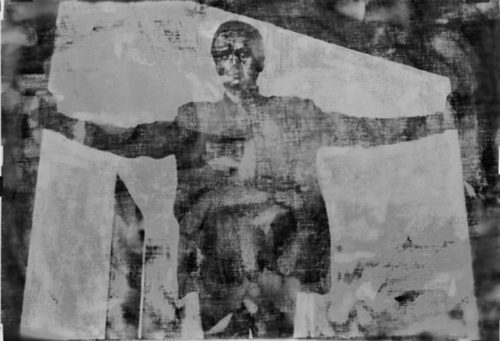
Matt Saunders, solorized photography.
“The future always looks good in the golden land, because no one remembers the past.”
Joan Didion
“Thus, the task of defining liberty becomes still harder. It is not so easy after all to establish even a contemporary definition of liberty. Not only has the intellectual already had to decide to change bourgeois social relations, but he must now find out the laws of motion of society, and fit social relations into a causal scheme. It is not enough to want to be free; it is also necessary to know.”
Christopher Caudwell (1938)
“…we have an impression of a state in which an individual’s separate emotion and personal intellectual act are too weak to come to anything by themselves and are absolutely obliged to wait till they are reinforced through being repeated in a similar way in the other members of the group.”
Freud
“Freedom is the consciousness of necessity.”
Hegel
Among the many things that I feel has been lost in this era of dying Capitalist hegemony, is a sense of place. I grew up in southern California. Mostly in Hollywood but like most native Californians, I spent a lot of time in other nearby locales. For California is the landscape of roads. I want to write ‘of open roads’ but the roads have long ago stopped being open. Still, the mythology of automobiles infuses all things connected to the California imaginary. The changes in my childhood home are somehow reflective of the changes to American society over the last forty years.
And southern California is not quite northern California. The cultural vocabulary is different, and the difference comes from, I think, the deserts of the south. The north is lush, and rainy at times, and it has fog and beatniks and Marin County. The South has the Mojave and Hollywood and Imperial County. The South is the desolate and arid. And it is that which I most miss. The space that nobody wants. California might be the most populous state in the country, and the richest, but it is also the most denuded and dead. When writers write of the westward movement of drifters and dreamers they are writing of the south, not the north. Northern California is stable and entrenched. The South is unstable and fluid, it is the land of exiles — not the North.
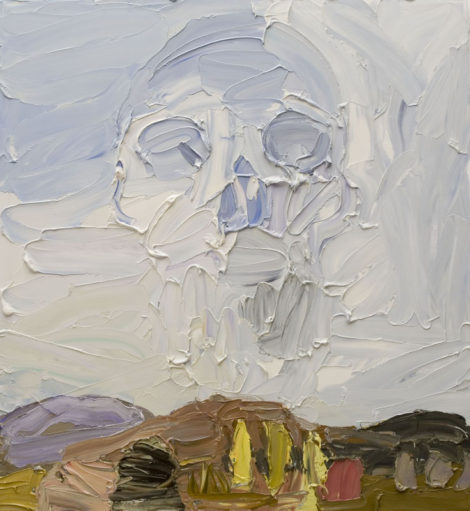
Ben Quilty
And cutting across both cultures is the Central Valley. The agricultural armpit of the Left Coast. Joan Didion is one of the great writers of the central valley. Her essay, Dreamers of the Golden Dream remains one of the best articulations of California malaise and those always just-below-the-surface homicidal impulses. My adolescence is a garbage bag of memories of places like Coltan and Palmdale, Indio and Rancho Cucamonga. It is Monrovia and Lompoc and Oxnard. Dick Nixon was from Whittier. I remember going to a party in Whittier when I was about seventeen. I met a girl with braces. So I ended up driving out to Whittier for a few months. The freeways were mostly empty in those days. Driving at night out to small towns like Whittier were mini pilgrimages to the idea of California; an idea that contained within its tawdry borders a kind of unwholesome promise. For the dreams of those migrating to the left coast are never healthy. Chandler and Cain wrote this one story over and over. The failed configuration of the tainted dreamscape. Mildred Pierce is one of the great California novels for this reason. And of course there is Hollywood. Los Angeles is the city where, at least when I was a teenager, everyone had some rather direct connection to the film industry.

Natvar Bhavsar
“Of course, no one knows this better than Joan Didion. She loves the state as only its exiles can; she recognizes that California is a land for the stupid and beautiful and she knows that there is still a romance to it that, even if you are not stupid or beautiful, makes you wish to belong. I began to read her seriously in my own exile, in a Connecticut dorm room, where she remade California into a land of words, a place I recognized for its splendor as well as its terrible power. Finally, here was a landscape so wholly encompassing that it had room for us all—even its shaky, withdrawn daughters.”
Zan Romanoff
And while it is true that southern California is all palm trees and beaches, they exist in the shadow of the inland deserts and the dusty transitional spaces that link these two cultures. Driving from downtown LA east on the *ten* is to pass one dead end town after another, each more depressing than the previous until you reach Palm Springs and that notable freeway sign that reads “Palm Springs/Other Desert Cities”. Veer to the right and you go to Hollywood east, the playspot, at one time, of Bob Hope and Sinatra and Tony Curtis. I think what I like about Palm Springs, and the High Desert around Joshua Tree is that there remains a quality of the land time forgot. In some respects very little has changed in fifty years. That’s an illusion, of course, but a comforting one. Nothing rots in the desert. It is preserved, and that includes people. Old leather skinned white haired men wander around the *health food* stores of Joshua Tree and Yucca Valley, hiking thirty miles a day to nowhere, and back. But if you take that other desert cities turn off the road straightens and heads due south eventually. Imperial County lay ahead, the poorest county in California. William T. Vollman’s book Imperial, is something of a singular achievement; a strange journalistic and personal tour of the psyche of the southern most county in the Golden State.
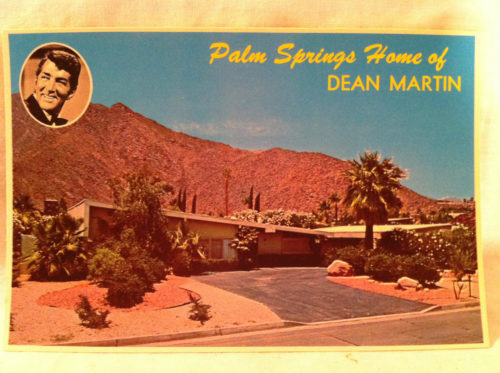
1950s post card
Vollman wrote in an interview on Imperial…
“Do you remember H. G. Wells’s Time Machine [1895]? The subterranean Morlocks keep things running so that the hedonistic Eloi can enjoy the sun and make love. In exchange, the Morlocks get to eat the Eloi. Whatever lies beneath the surface may indeed devour what is above, especially if it goes unrecognized. Secrecy is power. This paradigm is what makes the best work of Poe, de Sade, and Lovecraft so haunting. Secrecy is also power in Orwell’s 1984 [1949], when Winston and Julia have their (so they believe) undiscovered love nest, where they can be soft and naked.”
Imperial County is the unvarnished version of the Central Valley. It is the Morlocks coming for payback. It is the America that remains invisible. For this is a nightmare that far outstrips The Walking Dead or any number of other dystopian fictions from Hollywood recently. At the start of the book Vollman writes of a sore that wont heal, a sore he got as soon as he entered Imperial County. And this is a perfect metaphor, really. For the pollution of Imperial County is so acute that descriptions fail before the magnitude of it. Vollman meets a Mexican in a rubber raft/boat…on the trash filled Rio Nuevo — New River (“reeking brown cloaca”). The migrant workers cross this dangerous stretch for the privilege to pick broccoli in 110 degree heat for a couple dollars a day. Its so hot in the cotton or corn fields that the old pick ups that deliver workers to the fields are careful not to park near too much vegetation, even weeds, because the heat of their tires or brakes might start a fire.
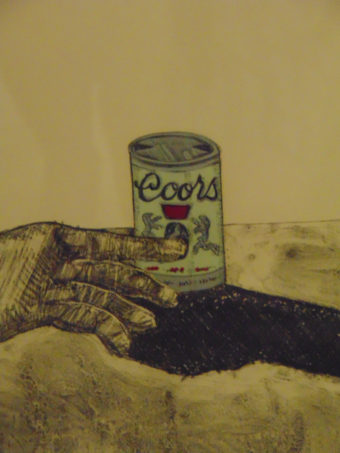
Fritz Scholder
Humboldt County in the central north of the state is NoCal’s answer to Imperial. Home to the ‘Lost Coast’, an oddly ignored swath of coastline that, while beautiful in some terrible way, is also generally accepted as inhospitable. Humboldt and Mendacino Counties make up the Emerald Triangle — the Cali version of the golden triangle, except for pot and not poppies. If the maquiladoras of the border are generally outside law enforcement mandates, the pot growers of the Klamath and Northern Coast ranges in Humboldt County are most certainly outside it. Mark Arax, the veteran journalist covering the Central Valley, noted that over 350,000 plants were seized by DEA raids in the mountains of Humboldt. That’s about 5% of the total marijuana crop growing up there. The cops and agents of various law enforcement play out the charade of fighting pot cultivation, but nobody believes it. And it is true, as Arax points out, that the vast majority of brush fires are the result of indoor weed farming. It is also something like 75% of the economy of both northern counties. This is the only growth industry in California outside of prison construction.
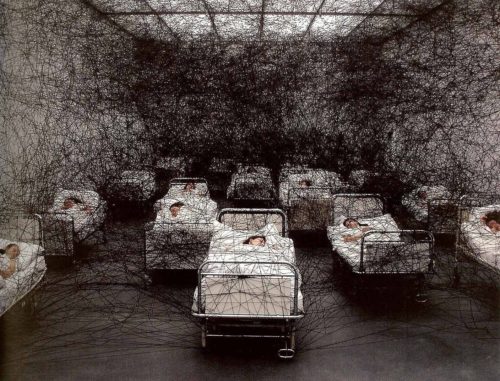
Chiharu Shiota
And speaking of prison, California is second only to Texas in numbers incarcerated. Of course if you go by per capita percentages, Alabama and Louisiana take the cake. In California state facilities over 19% are serving life sentences. Prisons are not built in Beverly Hills or La Jolla or Carmel. They are built in Lompoc and Ione, Coalinga, Herlong, and Vacaville. The conditions in California state prisons (and federal but that’s another whole story) are in violation of all international standards of human rights. Pelican Bay (federal), a super max joint, is routinely ranked as one of the world’s worst prisons. The landscape, then, is one of pure nightmare. When one looks at the Hollywood dystopia of the last decade, it is curious that almost all zombie or viral apocalypse narratives (always reconstruction fables) unfailingly neglect the obvious sanitation issues. Think of the Houston astrodome after Katrina. Backed up toilets and no ventilation. Not to mention where the fuck does all the drinking water come from? Those producing and making these things don’t want, it is true, to buzz kill the ratings, but it is also, more, simply a failure of imagination. And that’s not quite right, either. It is a fear, a desperate sweaty upper lip white knuckle fear of actually looking around themselves. Class segregation is expressed on a meta level, in a sense, by the intractable privilege of even Zombie world views.
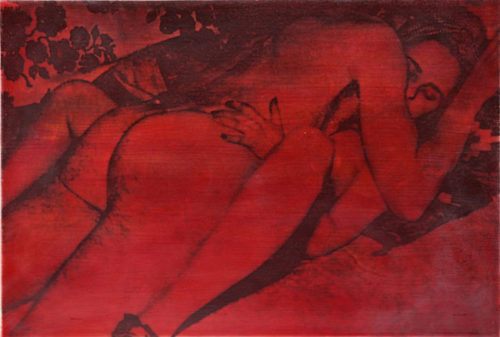
Eva Schlegal, photography/media.
With North Korea in the news lately, I have come across various comments from people I know, and some I don’t, on how repressive is this *regime*. And I wonder, when I hear these observations, what exactly is meant. And mostly, I think, what is meant has to do with optics and style and less to do with examining what one means by *repressive*. But the other direction this discussion takes is to examine what contemporary America imagines *freedom* to look like. In the 1930s, Christopher Caudwell wrote that bourgeois society saw freedom or liberty as the absence of social organization. Caudwell died at the age of thirty, fighting against fascism in Spain. My friend Molly Klein reminded me of him this week. Caudwell, writing (circa 1935) of mass culture…that it…
“…enforces a dead level of mediocrity.. art’s role is now that of adapting the multitude to the dead mechanical existence of capitalist production, in which work sucks them of their vital energies without awakening their instincts [or potentialities], where leisure becomes a time to deaden the mind with the easy phantasy of films, simple wish-fulfillment writing, or music that is mere emotional message … Immense technical resources and steady debasement and stereotyping of the human psyche are characteristics alike of factory production and factory art in this stage of capitalism.”

Shi Guorui, photography.
This is reductive, to be sure, but it is also basically correct. It is even more correct today, in fact. But Caudwell also rejected a vulgar idea of populism. He may have been critical of writers like Joyce because their individualist conceits reinforced a certain bourgeois sensibility about daily life and reform, but he also saw that serious art was critically valuable for awakening people to their class position, and also to the metaphysical dimension inextricably bound up with repression. Caudwell (real name Christopher Saint John Sprigg) died at the Battle of Jarama fighting Franco’s Morrocan brigade. Ben Hughes, an eyewitness, wrote of it…
“Ignoring the order to retire, they set up their Chauchat light machine gun…which they had been employing to great effect all afternoon. Soon the first enemy troops appeared. Pausing to see what would become of them, Frank Graham saw Beckett and Sprig open fire. Several Moors fell but the gun jammed. As Graham watched, they desperately tried to clear the blockage but the enemy charged. Hurling grenades, they closed in, then finished them off with bayonets and machetes.”
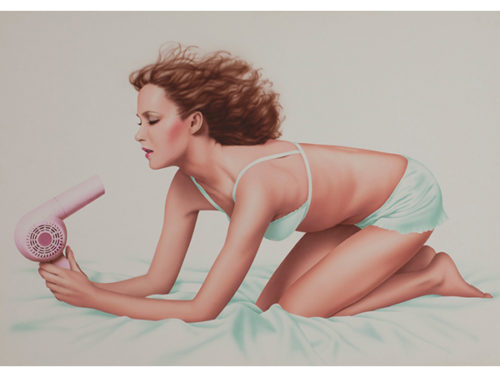
Harumi Yamaguchi
More to the point here, though, beyond the tragedy of Caudwell’s young death, is that he represented something of a rarity. He was that organic intellectual, and his preoccupations were vast and varied. Rob Wallace, in an article worth reading in full on Caudwell, at Monthly Review…writes…
“Machines, which continually evolve across designs, also experience individual histories: “no machine is changeless—it wears, grows old and goes wrong. These ‘faults’ or changes are not part of the ‘plan’ or goal of the maker.… Yet they are not ‘magic’. These faults all have causes, and when the axle fractures or the plug oils up, we look for the causes…from determinants outside the plan.” Organisms—like machines—aren’t “a congested desire of the bourgeois”: “Such illusions…are always found in the ideology of a ruling class, which believes freedom is found in the forcible imposition of one’s will on others, regardless of the nature of reality. This particular illusion is due to the specific nature of the bourgeois class society, in which domination is seconded by rights over matter, which involves the creation of the machine.” If a bourgeois scientist were to grasp the class limits of such metaphors, he or she “would realise that he [or she] is not merely a scientist in the abstract, but a bourgeois scientist in the concrete.”
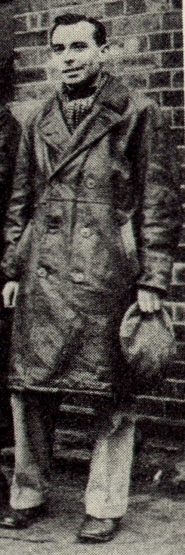
Christopher Caudwell
Edward Curtin wrote a piece that can be found at Global Research, as well as his blog here...http://edwardcurtin.com/snow-death-and-the-bewildered-herd/
“Wherever you go in the United States these days, you sense a generalized panic and an inability to slow down and focus. Depression, anxiety, hopelessness fill the air. Most people sense that something is seriously wrong, but don’t know exactly what. So they rage and rant and scurry along in a frenzy. It seems so huge, so everything, so indescribable. Minds like pointilliste canvases with thousands of data dots and no connections.”
The California I remember no longer exists. Nothing I remember exists anymore. The contemporary condition is one of remembering, always, what is no longer there. And the strange ascension of the machine is now something both and less than those futurists from mid century imagined. Our robot overlords are just telecom produced gadgets of infinite banality. One of the by products of erasing the sense of place is that the trivial becomes elevated and fetishized. I have noticed, in terms of Hollywood storytelling lately, that the second season of almost any successful series is almost always a cartoon version of the first season. And this is because there are no characters, but only the prospectus for characters and by the second season this fact can no longer be hid or disguised. But it mostly doesn’t matter because audiences today have been trained to anticipate the cartoon as the evolutionary goal of narrative itself. That the current President is a cartoon cannot be an accident, I don’t think. The previous occupant of the White House was a prospectus for a character, but he was not a character (if we keep speaking in terms of this manufactured political narrative of the ruling class). He was an illusion, but an illusion that functioned a bit like a banal machine. The bourgeoisie in the U.S. do indeed scurry about now in a kind of anxious hyperkinetic race to nowhere. They insist Trump is an aberration, not simply the final act of this badly constructed comedy.
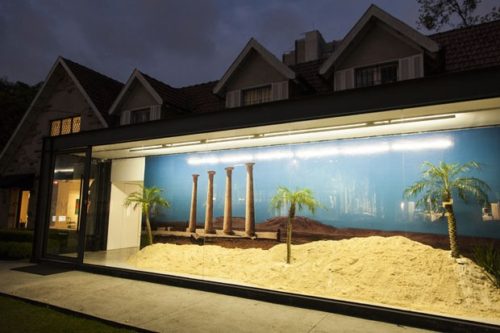
Romy Pocztaruk, photography.
When Freud said the aim of all life is Death, he might well have been writing a TV review, today. This takes me back to these notions of liberty and freedom, and to repression. The educated bourgeois U.S. citizen sees the DPRK as repressive. They conjure up images out of a Chiat-Day ad, or some cheezy Star Trek episode. For to most of the affluent classes of the West the idea of freedom is simply a freedom to subscribe to HBO rather than Showtime. The deaths of immigrants along the US-Mexican border, or in Syria, are viewed as contestants in a game show, and contestants who have lost. I wrote last time that homeless men and women freezing to death on the streets of American cities are viewed the same. Nothing is as real as the banality of mass culture.
“We could postulate that had Freud been alive today, to a degree he could have included social phenomena such as television, spectator sports, mainstream cinema or celebrity culture in a long list of, “powerful distractions, which cause us to make light of our misery, substitutive factions, which diminish it” and particularly, “intoxicants, which anaesthetise us to it.” It could easily be argued that the entire ‘Society of the Spectacle’ serves to lull all of us into an inertia that keeps us blissfully unaware of the causes of our collective miseries and frustrations. Disenfranchisement and apathy are the hallmarks of advanced consumer-(spectacular)-capitalism, along with civilisation’s distinctive features analysed by Freud that cause extensive damage to our mental and physical well-being and forbid the realisation of our desires and aspirations. But the organisation of the ‘Spectacle’, its invasion into every part of our daily lives and encroachment into our psyches keeps us all sufficiently docile and submissive, despite the very real internal antagonisms and contradictions imposed on us by the external world”.

magazine ad, 1960s.
The above is from a piece posted by Jonnyboss, at Libcom.org circa 2011. This is all in the zeitgeist now.
“Are eyebrows going to be talked of, in connection with the Eye of God?”
Wittgenstein (Lectures & Conversations)
This quote of Wittgenstein links up with his somewhat famous comments on Frazier’s Golden Bough. And perhaps oddly, I think Wittgenstein is relevant to the contemporary cultic fixation with banality. Wittgenstein was troubled by Frazier, for a number of reasons. But mostly because he felt Frazier was so missing the point of shamannism and magic. For Wittgenstein there are no errors in magic. “Error arises only when magic is interpreted scientifically…” Rituals, thought Wittgenstein, were not opinions. And this sort of returns me to both Curtin and Caudwell.
“Where a civilised people’s early literature is preserved, it is found to be almost entirely poetical in form – that is to say, rhythmical or metrical.( ) The metaphysical speculations of the Aryan race in India were versified. Egyptian astronomy and cosmogony were poetical in form. Religion spoke always in rhythm or metre, and just as the epic grew out of a poetic theogony glorifying aristocratic history, so the early agricultural ritual, cast in metrical form, became the Athenian tragedy and comedy, and finally, after various vicissitudes, survives as poetical drama to-day in the opera and the Christmas pantomime.”
Christopher Caudwell
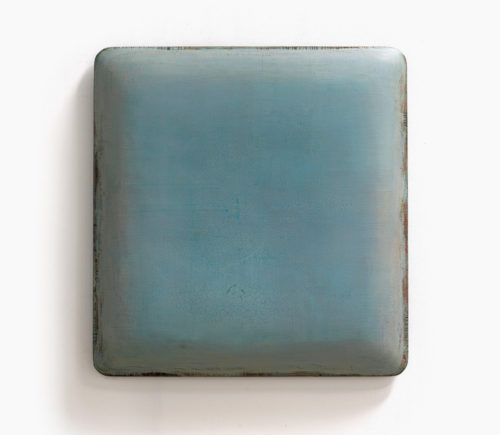
Su Xiabai
“No doubt one could say that even the most obvious irony is a sort of playing at deception…”
William Empson
Empson saw all grammar as inherently operative in several registers at once. Ambiguity was connected to Aristotle and rhetoric (persuasion), and to irony. Empson and Wittgenstein share a good deal, actually. And it is in their understanding that what is to be excluded in a reading of a particular author or thinker is crucial to the meaning of that author. Here is, again, the basic losses of contemporary culture. This is, today, a society without subtext. Ambiguity is denied. Say what you mean and mean what you say. America is forever a Puritan society. When Caudwell, or anyone, really, discusses poetry, I take it that they mean poetics. Poetry — the word, today, has taken on a commodified connotation. The loss of poetics is at play in this reproducing of cartoon drama. The cartoonish elements are there to reassure the viewer or reader (rarely) that this is not reality, it is not meant to suggest anything other than *nothing*. Emptiness is the ultimate virtue now. Well crafted nothing if you attend MFA writing programs. Ideas are shunned. Ideas are what scientists traffic in, as they toil for their corporate paycheck.
California gradually became the symbol for a kind of phantom world in which leisure was the ultimate goal of life. A sunny surf and celebrity destination that allowed for a subverting of the old Calvinist tropes of hard work and sacrifice and nose to the grindstone stoicism and replacing it with a carefree louche indifference to the real world. California was there at the far end of Manifest Destiny, and it above all else suggested that work was wildly overrated. It was of course maintaining itself as a fiction, that was the ironic trope that was layered over it. Nobody was meant to believe it, even as they believed it. It was a desire for that which, in another compartment of the brain, one enjoyed making fun of. Meanwhile, the state I knew and grew up in and lived and worked in, was being changed but not into a symbol. It was increasingly a congested polluted and angry place. But it was now, by the 1980s, the stand-in for American freedom. California was not to be confused with a repressive regime like North Korea. The iconography was always sun and light. Totalitarian societies were dark and monochromatic, wet and dank. California was bright and dry (well, southern California, which is all that mattered by the 80s). And that dryness was important in a sense because the desert dimension of this symbology was there to keep desire sterile and infertile. Excessive moisture is somehow linked unconsciously with a deep hatred of women, and with that which is dangerously unregulated. Infertility is both valorized and despised. It is the ultimate contradiction of white patriarchy. It is both liberation and failure.
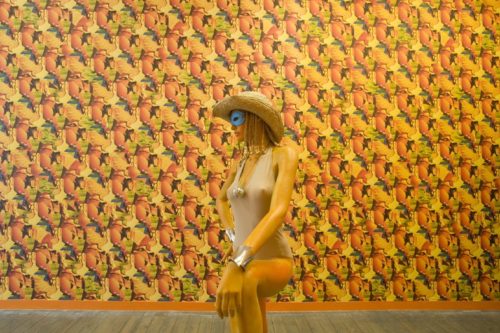
Pio Abad, installation.
The clarity of Empson, or Kenneth Burke, or Leavis even, or Kermode…the most unfashionable of cultural and literary critics, is something decidedly lost today. The bourgeoisie is, today, unravelling both psychologically and in terms of class position. And the unravelling is taking the shape of confusion and there is new opaque quality to the white liberal, almost like a sort of slightly out of focus selfie. The infantilism of mass culture, though, reached terminal mass, I think. And out of that is a good deal of very good work, and much of it is in the field of miniatures. But the miniature aspect feels like a sort of psychic reboot from the ashes of total infantilism. It is also the impulse to start over. To rebuild the world, to rebuild reality. That is the appeal of all the post apoc narratives, the reconstruction sagas. Start over. From nothing if possible. It is a fake *nothing*, but that itself is interesting. A recent science paper from Ahmed Farag Ali at Benha University and the Zewail City of Science and Technology, in Egypt, denies the idea of beginning, and suggests the universe always was and always will be.
The Big Bang model never fit well with advanced capitalism — mostly because Capitalism must have no end and no beginning. The fact that it does, obviously, have a beginning is beside the point. As allegory, it always was and always will be. As someone famously said, it is easier to imagine (for some) the end of the world than the end of Capitalism. This is Fukuyama trope repurposed in a sense. The end of history was the installation of Capitalism as eternal. The new quantum theory of no beginning and no end always posits a universe filled with *quantum fluid*. And so physics today begins to resemble Vedic philosophy or at least Pre Socratic philosophy.
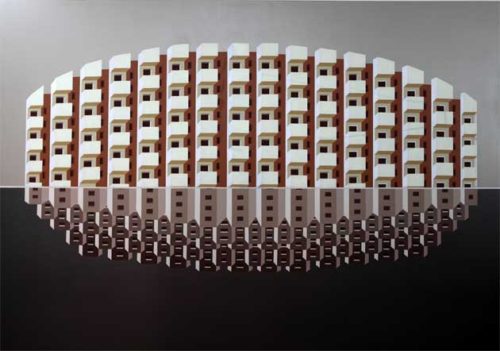
Gigi Scaria
It’s not an accident that so much Hollywood narrative today is set back in the 70s or 80s. The last epoch without digital technology. A world without cell phones, without the internet. It is a bit like the tendency to do away with sub-text. A nostalgia for pre digital life is one that wants to also erase ambiguity and to do that means rebuilding history. Rebuilding memory. And the other appeal of setting stories in a pre smart phone era is that the motivation or contours of character (prospectuses for character) can be driven by not knowing. If you can’t google it, then you can spend a lot of time following one’s mistakes. Stories from Hollywood today, if set in contemporary America, tend toward simply the tracking of surveillance. And that is, finally, not very satisfying even for the sub literate end of the audience. The revelation that knowing everything about everyone means knowing nothing about anything is starting to sink in, I think.
There is a latent desire now surfacing that looks to a new magic — a place or setting where there are no errors because error doesn’t exist.
“The creators of characters, in the traditional sense, no longer manage to offer anything more than puppets in which they themselves have ceased to believe. The present period is one of administrative numbers.”
David Shields

Tenzing Rigdol
My memories of childhood include the dawning realization that where I lived, where I came from, California, was a place of ridicule. And much later, as an adult, I came to realize that this ridicule was the result of a deep resentment. And that resentment toward California, both the real and the unreal version, was because California was never the status quo. It was a dream, and a delusion, but the Eastern bourgeoisie sensed, intuited, that their own investment in retaining and protecting the cultural and political status quo, was somehow threatened by the disunity and ambiguity of that western most state.
Mass culture today has enormous and deleterious effects on the collective consciousness of the populace. That fake nothing I referred to is the nothing, the *nothing* of the imagination, that is envisioned when one hits the delete key. It is the nothing that has no potential. There is nothing (sic) pregnant in it. It is the infertile nothing of amnesia. That is all.

I did some growing up in San Luis Obispo in the mid to late 50s, small 25K pop. former market town, quiet, safe, ag/tech college w/ 1500 students. SF 215 miles north, LA 204 miles south. It really was not one or the other. The gift of that.
Now LA has metastasized into it and beyond. The college has 25K enrollment. People who moved up from San Fernando 30 years ago are longtime locals. The SF/LA cultural boundary the width of a ditch somewhere around King City.
Huxley’s After Many A Summer… seemed to catch that SoCal inevitability when I read it in high school, haven’t gone back to it.
Didion. The light the way she understood it. The felt air. Feral mansions.
Pizzolatto caught something in the second season of True Detective I think, maybe not native so much as witnessed, like Chinatown, to me not cartoonish either. The bright menace that paved that, and what’s under it.
The art in these pieces works, always, opening, furthering.
@ichael….yes to True Detective 2. The city of vernon and that old legacy of corruption, a kind of hermetically sealed small enclave corruption. That was quite correct. That is the california history of labor, too.
An amazing treatment of the underlying iconography from which the dreams that money can buy have sprung and the cloth of California’s capitalism have been woven. What is missing, of course, is the prior 10 millennia when the landscape was first settled, by survival of the fittest deposits from the Bearing Straight to the Peruvian alps, and then by the long adaption of ritualized practice as the tribes of California gradually learned what stable settlement required of them. That was the foundation of skin, 150,000 skins, upon which the California picnic would laid and secured with the westward ambitions of wagons and guns that Stephen Powers in his 1877 USGS report remarked “Never before in history have a people been swept away with such terrible swiftness,” all but 20,000 of the original 150,000 of them, the remainder harnessed to the engines of the new economy and enslaved until they, too, had nearly disappeared. From the gold fields to the oil fields, from aquaducts to orange groves, that was when the history of a “California that no longer exists” really begins, and where its foundations were originally laid. That erasure was no accident of cultural overwrite and palimpsest, but a systematic lobotomy from the scalpels of the Spanish governors and Anglo “science editors” of the time (sound familiar?) that saw the history of cultural termination carefully excised from our text and carefully replaced with the smiley faces of happy indian children splashing in the zanjas of Mission gardens. If you want to know where our Casinos, Royal Oaks ads and the politics of suckers came from, you’ll have to turn the pages back to native Californians liquored up and sold to work in the bean fields of Orange County or whoring in the pueblitos of lazy Spanish towns dreaming their siestas in the shade. In the lexicon of California interruptus, ‘what goes around, comes around’ is a too familiar equation in our sentential calculus.
Spirit of the Ground
Out of the South they came, from the missions
of Baja these Cochimí came. Some suppose
it was because that was where the padres led.
The church, long on desire but short of ways,
and so to a handful of mission Indian they owed
their passage from San Borja and Loreto—
the short end of the Baja road— through unknown
wilderness and to any reason they stayed alive.
Why, to consider the means, should we remark
that anything less flowed through Cochimí veins
than the passion and vision of a Cabrillo
or De Anza or Lewis & Clark?
Why else would they agree to take a single step
into those uncertain deserts better left alone?
To string some fragile strand of mission beads?
—We do not believe the Orders of Assisi
held much sway beyond the padres, and they?
Well, they drank their own wine deeply.—
More than that we best leave for believers to explain.
Whatever the case, it was a fragile
human rosary to be sure. Two out of three
never made it over the miles of devil rock
and bare desert boil. Just a handful, twenty-eight,
would arrive to consecrate that empty land
— the first bead in the Junipero Serra strand.
To Mission San Diego Alacala they came,
these Baja field hands, these combo sappers,
wagoneers, healers, hunters, mappers and pallbearers
all-in-one, these explorers and teachers we’ll call
the first braceros, the Baja field hands
who broke the earth to clod and clod to soil,
who baked in the sun and toiled to death.
But why,
&what kind of home was to be the home
of a mission breed who neither sat at the padres’ table
nor would ever return to his own lodge over stones
long uprooted from clay soils older than the church?
What home did they desert, what unguessed lands
had they imagined?
Strung out on the practice of misery they came
to that unturned soil. Starving and exhausted
men they came. Scant skeletons ravaged
with disease, sunburnt and raw they came
to labor and die, break trail, build churches,
leave bones, plant crops, tame land, and then
pass into oblivion. Die unknown they did,
unnamed they came, these first explorers
to cross that long cruel sand— the first
of the Baja field hands, these Cochimí Indian.
And does anyone know or ask why? &what
carried them so far from home? What document,
save death, might serve to carry them back again?
When all too swiftly their terrible job was done,
the tribes they taught displaced them
and in turn were displaced and then succumbed
as disease and cruelty would took their toll.
Thus they learned the modern way of misery
until they could self-inflict it with amazing skill.
What that didn’t get the soldiers would kill,
if not with guns, then with syphilis.
Between the Spaniards and the Yankees it took less
than a century to reduce twelve-thousand years
and a hundred and thirty-thousand people to a handful
of tears and a little dust. Oh, by then they were
given their ration of the grape, paid
in aguardiente at the end of the week. Drank
and fought till Sunday, arrested, corralled
and auctioned Monday morning.—cheap labor…
dirt cheap the Angelino growers would say,
and kept it up until the checkerboard was
just about complete and, yes, how the money flowed.
As eloquent as he was, John Muir said nothing
that ought endure as much as, in that very year,
Stephen Powers said in his government report:
“Never before in history has a people been
swept away with such terrible swiftness.”
Martin Luther King didn’t say that.
J.F.K didn’t say that.
Neither did Abraham Lincoln.
That was 1877, the same year John Muir
entered the valley of San Gabriel where Dr. Conger
said to Muir, “Milk and honey and plenty of money.”
And yes, I particularly liked Steppling’s treatment of the place of literature and poetics in the role of de-erasure, the reclamation of our memory of continuous culture, something far larger than anything our amputated grammars can possibly conjure of magical reality.
Thank you for expanding the way I think of California.
Your illustrations to the piece, always well chosen. As one who spent 65 years “serfing in Connecticut”, my simplistic vision of CA, distilled from Burbank, was of California as the totem of Manifest Destiny, sort of America’s “Happy Ending.”
I’m so impressed that your new domestic situation hasn’t turned your intellect to mush, new fatherhood² did a number on me @ 35 years younger.
Speaking of Joan Didion, I couldn’t recommend more – to any non Californian still under the false assumption that California is, and has been historically, a land of tolerance, based solely on meritocracy – Joan Didion’s latter 2003 California essay, Where I came From. As someone who, as a single female, migrated decades ago to the California Bay Area because livable wage jobs utterly dried up in the Pittsburgh, PA area; Joan’s essay was, finally, a breath of honesty about exactly how brutal California has always been under its highly touted ‘Tolerance’ veneer.
From (hardcopy) Joan Didion − We Tell Ourselves Stories To live – Collected Nonfiction, Everyman’s Library, Alfred A. Knopf, 2006 –Where I Was From, page 1090:
Back tracking to page 1001:
On top of that (still rampant) racism, Joan mostly speaks to the still rampant inhumanity of classism and ageism (for those not wealthy) which made California the 9th largest economy in the world. From page 1082:
(Above boldfacing mine.)
John,
Didn’t want to push my luck on the length of my above post, but I had wanted, so very much, to thank you for the above link to Edward Curtin, and (via your twit) the piece on September 11th, 2001: Dr. Graeme MacQueen – Beyond their wildest dreams: 9/11 and the American Left https://truthandshadows.wordpress.com/2017/03/14/911-and-american-left/
Exploring those two links further for hours I also discovered clear writing on that anthrax scare conspiring. (Oh lord, remember Senator/Doctor Frisk, the scapegoating of Bruce Ivins to the point he committed suicide (the ’White’ Gloved Elite specialize in that form of untraceable and horrid death) and the Giuliani LLC entity’s [Faux] Anthrax Cleanup™ of that Boca Raton, Florida American Media domicile where the first victim (likely targeted as a disposable no one™ who offended someone in the Bush dynasty), photojournalist Robert K. Stevens, worked (for one, see: http://blogs.findlaw.com/injured/2011/11/anthrax-victims-family-settles-for-25m.html ).
It has never failed to both amaze and horrify me that everyone believes there are those who conspire for power over others. Yet, the US/London Inc., etcetera, propaganda technocracy has so thoroughly instituted itself that persons (Online™ SPECIFICALLY, not so at all among the off line impoverished, detained, forcefully drugged and incarcerated) seem no longer able – and no small wonder with all of the forced Disruption™s of thought and meditation – to trust their own cognizance that a theory of conspiracy is most simply a thought of who conspired in a particular con, take over, disaster, assassination, etcetera. Judicial Systems have been incarcerating humans for centuries based on determining (and fingering) conspirers. E.g.: two or more persons had to of conspired towards the New York World Trade Center , Pentagon explosion events of September 11th, 2001, and – especially after that 1962 Operation Northwoods Affair (I always wonder why I rarely ever see it referenced by the Online Activists so quick to moderate and troll name anyone who infers those running the US were complicit) – the finger points to the group running the United States as a prime suspect.
Thank you for the ‘voice,’ John.
(Sorry if this is a duplicate comment, the first time I hit post comment I ended up on a cannot display page ‘window’ and after waiting a bit to see it posted, assumed it didn’t post.)
(sorry if this is a duplicate comment, the first time I hit post comment I ended up on a cannot display page ‘window’ and after waiting a bit to see it posted, assumed it didn’t post)